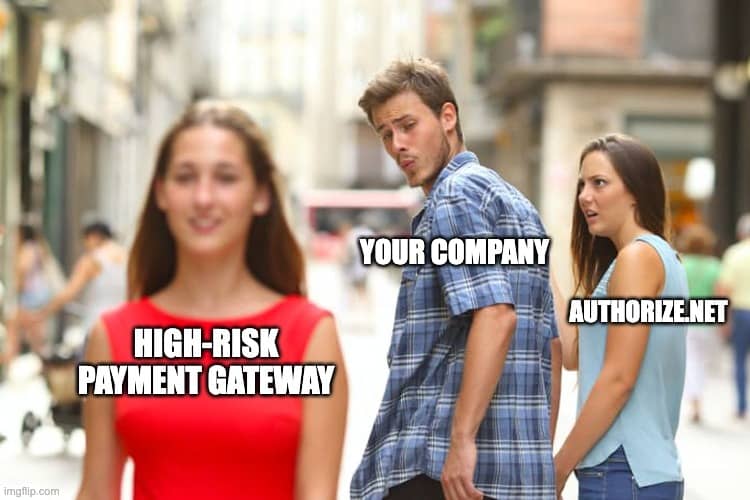EBT Retailers - What Are the Requirements?

If you operate a supermarket or other retail establishment, you might wonder if you should accept electronic benefits transfer (EBT) cards. Are there benefits of accepting EBT cards? And what are the EBT requirements for retailers? In addition, completing an EBT merchant application and obtaining an EBT FNS number requires the right equipment if you plan to accept Supplemental Nutrition Assistance Program (SNAP) program benefits.
Did you know? EBT retailers require the right point-of-sale (POS) equipment for EBT merchants. Reach out to see how we can help you upgrade your system.
More Americans than ever participate in state assistance programs, including:
- Women, Infants, and Children (WIC)
- Supplemental Nutrition Assistance Program (SNAP)
- Temporary Assistance for Needy Families (TANF)
Merchants who accept EBT card payments can see a range of benefits.
What is EBT?
EBT stands for electronic benefits transfer. It’s a system much like that of traditional credit cards and debit cards that facilitates transferring assistance funds to qualified individuals. The two main categories of EBT assistance are food benefits and cash benefits. The Supplemental Nutrition Assistance Program provides food benefits to recipients to buy eligible food items. The benefits are loaded onto the beneficiary’s EBT card. Food benefits cannot be used to buy any non-food items.
As of 2022, the maximum food benefit for a one-person household is $250 (if that person has no income). For each additional household member, the disbursement is increased by $188. These figures account for an individual or family with no income, although income doesn’t reduce benefits dollar-for-dollar.
Cash benefits are disbursed through the TANF program and can be used to buy non-food items households need. Neither benefit program’s funds can be used to purchase items on the restricted list, including alcohol and tobacco purchases. Knowing these differences are just a few of the EBT requirements for retailers.
What are Food Stamps, and How Do They Work?
SNAP, previously referred to as Food Stamp benefits is a federally funded benefit program that helps low-income individuals and families. If they meet eligibility requirements, they receive supplements to their budgets for food purchases and encouragement to purchase healthier foods.
In the past, food stamps were provided as paper stamps or coupons that looked like “white paper money.” Paying with these paper stamps had a two-fold problem:
- Stores had to collect them, send them in, and wait to be reimbursed, which often took some time.
- Customers were announcing to the store, the clerk, and every shopper in the same checkout that they were paying with food stamps—which added to the shame many people already felt about state assistance.
Today’s electronic benefits transfer programs provide recipients with a plastic card that works just like a traditional debit or credit card. Recipients receive their allotted monthly disbursements and can use the card at SNAP-participating supermarkets or farmer’s markets and even at online grocers such as Amazon Pantry and Walmart. Offering this payment option is good for your store.
Merchant Benefits of EBT Card Acceptance
Over 40 million people rely on SNAP benefits in the United States. The program has evolved greatly since its inception in the late 1930s and then again towards the end of the 1990s. Benefit disbursals are now streamlined—instead of paper food stamps, all benefits are deposited on plastic cards with a magnetic stripe. This makes EBT acceptance easier for recipients and merchants alike.
If you meet the basic EBT requirements for retailers, fill out an EBT merchant application and get your EBT FNS number. You can start accepting EBT cards in your store and play a crucial role in the health of your community. Accepting EBT and SNAP benefits means you might have to upgrade your point-of-sale, or POS, system, but there are a lot of other merchant benefits of EBT card acceptance, such as:
- Reaching more customers. Over 41.5 million Americans use EBT and SNAP benefits.
- Growing revenue. When you open your doors to EBT cards, you open your doors to a whole set of customers who may have frequented your competitors’ stores. This boost in customers equals additional revenue for your store.
- Updating payments technology. The typical grocery store doesn’t update its POS systems very often. This legacy equipment can often be difficult to manage with many different types of payments. Customers want to pay with their chosen method, and if your store doesn’t support a specific payment type, you could lose customers. The good news is that with today’s EBT point-of-sale systems, you can accept all types of payments—EBT cards alongside regular credit cards and debit cards—all in the same system. Today’s EBT systems are much sleeker and easier to use than legacy POS solutions.
You’ll need a new POS system if your current point-of-sale (POS) machine isn’t compatible with EBT card payments. The most crucial items you should look at are:
- Software costs
- Price of terminal
- Terminal features
- EBT compatibility
Most POS terminals have free software built-in, but the terminal itself may be expensive. Always confirm pricing before committing, and ensure the terminal offers the features you need for your specific business. A particular terminal might have several cool features—but if those features don’t serve a purpose for your store, it’s likely an added expense you can avoid.
Did you know? Zenti offers free EBT POS equipment and can help you choose the right system for your business. Contact us to learn more.
Are EBT and SNAP the Same Thing?
No, not exactly. EBT is the method used to disburse assistance payments—both cash assistance and SNAP benefits—to program participants. An EBT card essentially has two “accounts” associated with it. One is the “cash side” for recipients of cash assistance, and the other is the “food side” for SNAP beneficiaries. Some families receive both types of assistance. While funds on the cash side of the EBT card can be used to purchase household items and food, SNAP benefits can only be used to purchase food. Neither SNAP nor EBT cash can be used to purchase items on the excluded list.
Plus, cash benefits cannot be used in certain types of businesses, such as:
- Liquor store
- Casino
- Adult entertainment club
- Cruise ship
- Smoke shop
- Cannabis retailer
EBT requirements for retailers include understanding these differences and adhering to regulations.
The Advantages of EBT and SNAP Acceptance
Community members and business owners can see benefits of EBT and SNAP acceptance. SNAP recipients can more easily find and purchase the food they need and supplement their income. They can purchase better foods they may not have been able to before receiving SNAP.
As an EBT retailer, you also see benefits, such as an increased customer base, better cash flow, and revenue growth.
What Are the EBT Requirements for Retailers?
Before you apply to accept EBT, you must qualify. For example, approval to become a SNAP retailer requires your business to meet EBT requirements for retailers. Your business must meet at least one of these two requirements:
- You must offer staple foods.
- Your gross revenue from the sale of staple foods must be at least 51% of your overall revenue.
What is a staple food?
The staple food dominates—or should dominate—a standard nutritional diet. Staple foods are eaten regularly and are typically the ingredients required for healthy meals and snacks. Ideally, they form the bulk of a person’s daily food consumption and usually supply most individuals’ nutritional and energetic needs.
The USDA has outlined what the agency considers staple foods. While it matches the above definition, other requirements from the agency dictate what’s considered a staple food at your store. For instance, the USDA outlines four food categories considered staple foods:
- Fruits and vegetables
- Meats, such as beef, chicken, pork, and fish
- Dairy products, such as milk and cheese
- Bread, cereals, and other grain-based foods
To meet the requirements of EBT acceptance, your store must stock—and sell—a variety of the above foods. In this case, “variety” refers to the many different types of foods that can fall into the above categories, such as:
- Apples
- Cabbage
- Beans
- Butter
- Milk
- Cheese
- Chicken
- Fish
The kicker here is that, say you operate a bakery or deli in your store that prepares or sells heated meals or items—those foods are not considered staple foods. Even if the food falls into one of the four main categories, such as grilled chicken, it doesn’t count towards your stock of staple foods or your sales.
How to Apply to Be a SNAP Retailer
To apply for your EBT FNS number: Review program guidelines on the USDA’s FNS website at https://www.fns.usda.gov/snap. Then, register your business with the USDA. After registering, you’ll receive a link to activate your account. After activation, you’re free to begin filling out the application to accept SNAP payments. (If you’re the owner of more than ten store locations, review the information for multi-store owners—these applications cannot be completed online. You’ll get a dedicated FNS account manager assigned to your application, which will help you personally through the application process.) You have 30 days to finish the application and provide all your supporting documentation. The FNS number application only takes about 15 minutes to complete. Some questions are simple, while others might require a bit of research into your business to answer. For instance, some information and documents required include:
- An up-to-date copy of your business license
- Legal photo ids, such as a driver’s license or passport
- Social Security Numbers (SSNs) for all controlling business personnel, including owners, business partners, company officers and shareholders, and spouses
- Business bank account’s name and address
- Information about your EBT merchant services accounts provider, including contact name, address, telephone number, and website address.
Submit your application. After applying, you’ll receive instructions for submitting the required documentation to back up your application, such as business license(s) and proof of staple foods access and/or revenue numbers, for instance. You can upload your documentation online or print it out and mail it to the FNS processing center.
From the date the FNS receives your complete application and supporting documents, it can take as many as 45 days to receive your approval (or denial) letter. You cannot accept EBT card payments while you’re waiting for approval. The same applies if you’re waiting for an EBT FNS number renewal. You cannot accept EBT card payments outside the dates printed on your current SNAP permit. Once you’ve submitted your application and all requested documents, you can check the real-time status of the application at any time. Food and Nutrition Services might reach out during processing if they need clarification or further info. You can also call the hotline for SNAP retailers at 1.877.823.4369.
Once the USDA’s FNS approves your application, all that’s left to acquire a POS system and PIN pad that works for EBT card acceptance.
Rules to Live By as an EBT Retailer
Once you’ve applied and received approval, being an EBT retailer is responsible. EBT retailers must follow specific rules when accepting customers’ EBT cards. Your approval notice from the FNS explains penalties for EBT retailers if these rules aren’t followed.
If you fail to comply with the program’s rules, there can be serious consequences. The most important rules include:
- EBT card SNAP payments can only be used for food approved by the SNAP program.
- You cannot issue any cash back to cardholders.
- You can issue a refund, but all refunds must be initiated through the EBT system—you cannot issue a refund in cash.
- Card Not Present transactions are not allowed for EBT card purchases—the card must be physically swiped. If the magstripe doesn’t work, the cashier will manually enter the card number, followed by the recipient entering their PIN on the keypad.
The only situation in which Card Not Present transactions are allowed for SNAP is through online payments at retailers like Amazon Pantry, Walmart, and, most recently, Target.
Failure to adhere to SNAP rules can mean the loss of your FNS SNAP permit. In some cases, for more egregious rule violations, you could also owe a fine.
Get Your EBT Merchant Account with Zenti
A retailer’s first step to accepting EBT and SNAP payments begins with authorization from the USDA’s Food and Nutrition Services program. You can learn more about this designation at the Department of Agriculture website and apply to the FNS website. You may need to switch merchant account providers to accept EBT payments. Once the FNS approves your store and provides you with a SNAP permit, get in touch so we can help you prepare your POS for EBT payments.
Zenti specializes in EBT merchant services accounts. Chat with our EBT payment experts, and you can begin accepting SNAP payments immediately. Start welcoming your entire community to shop locally at your store.
Read Next

Find out whether Authorize.Net works for high risk merchants, what restrictions you might face and how to get approved.

Get expert advice on selling CBD products on Shopify, including compliance tips and setting up secure payment options.

Find out why Square may deactivate merchant accounts and steps to resolve issues and maintain uninterrupted payment services.
Need a High-Risk Merchant Account?
Disruption-free payment processing at the best price for your situation, guaranteed.
Get Free Guidance Now!